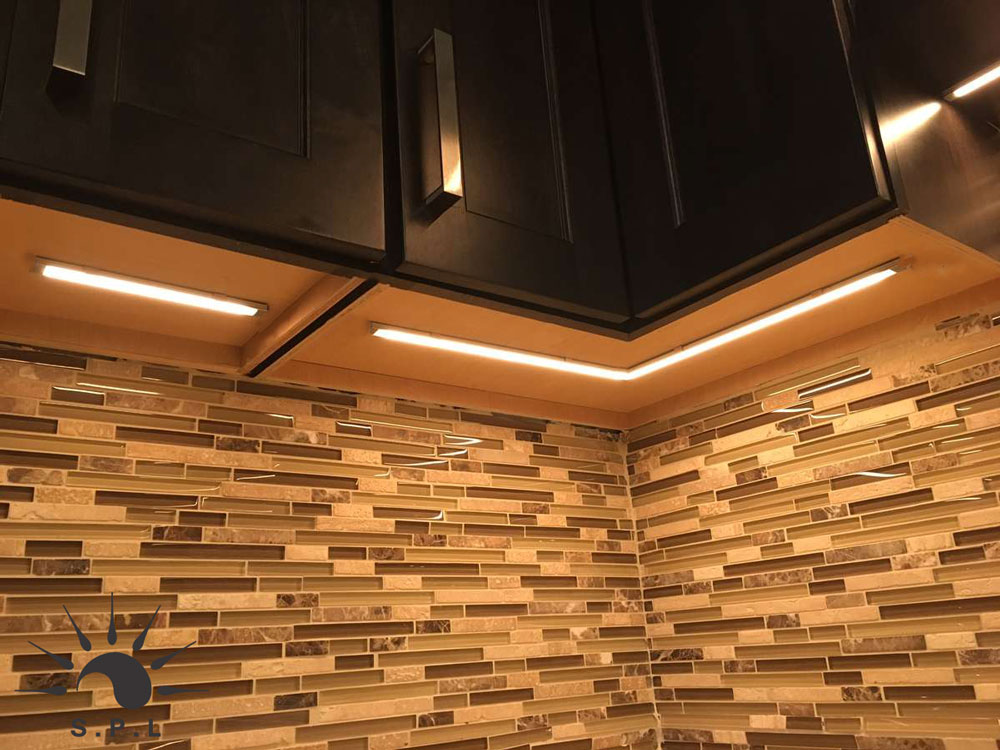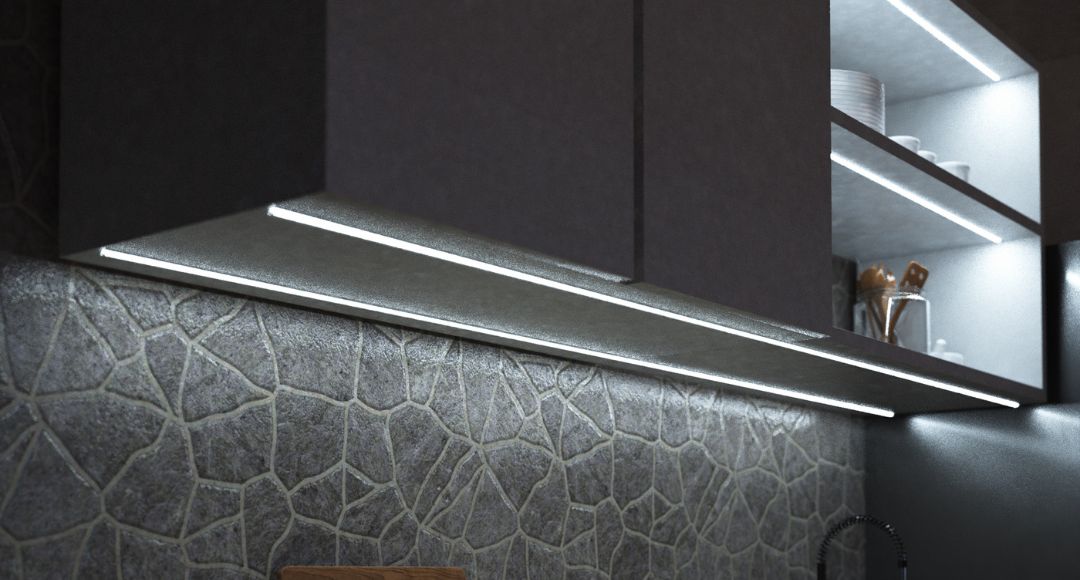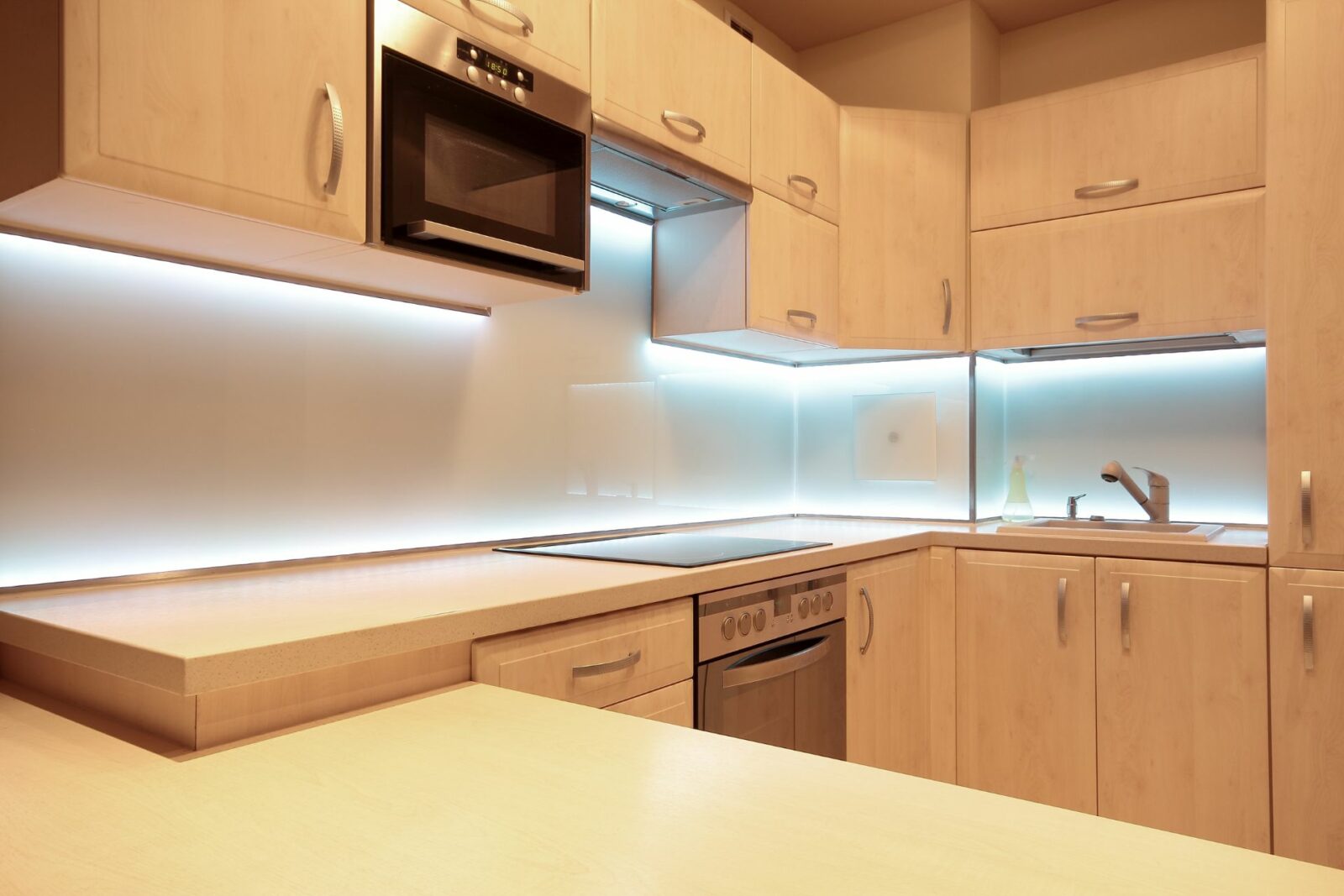Hardwired LED Strip Under Cabinet Lighting

Hardwired LED strip under cabinet lighting offers a superior solution for illuminating your home’s various spaces compared to battery-powered or plug-in options. This type of lighting provides a more reliable and efficient way to enhance both the functionality and aesthetics of your kitchen, bathroom, and other areas.
Benefits of Hardwired LED Strip Under Cabinet Lighting
Hardwired LED strip under cabinet lighting offers several advantages over battery-powered or plug-in alternatives.
- Enhanced Brightness and Uniformity: Hardwired LED strips provide a consistent and bright illumination, eliminating the uneven lighting often associated with battery-powered or plug-in options.
- Increased Durability and Longevity: Hardwired LED strips are designed for long-term use and are less prone to wear and tear compared to battery-powered or plug-in options.
- Energy Efficiency and Cost Savings: Hardwired LED strips consume significantly less energy than traditional incandescent bulbs, leading to substantial cost savings on your electricity bills.
- Improved Safety: Hardwired LED strips eliminate the risk of tripping hazards or loose cords associated with plug-in options.
- Enhanced Aesthetics: Hardwired LED strips can be seamlessly integrated into your cabinetry, creating a clean and modern look.
Applications of Hardwired LED Strip Under Cabinet Lighting
Hardwired LED strip under cabinet lighting can be effectively utilized in various areas of the home, enhancing both functionality and aesthetics.
- Kitchens: Hardwired LED strips provide ample illumination for preparing meals, cleaning, and working in the kitchen. They can be installed under cabinets, countertops, or even inside drawers to create a well-lit workspace.
- Bathrooms: Hardwired LED strips can illuminate vanity areas, mirrors, and shower stalls, enhancing visibility and creating a spa-like atmosphere.
- Living Rooms: Hardwired LED strips can be used to highlight artwork, bookshelves, or entertainment centers, adding a touch of ambiance to the living space.
- Bedrooms: Hardwired LED strips can be installed under bed frames or nightstands to provide soft and inviting nighttime illumination.
- Closets: Hardwired LED strips can be used to illuminate the interior of closets, making it easier to find clothes and accessories.
Examples of Hardwired LED Strip Under Cabinet Lighting Applications
Here are some examples of how hardwired LED strips can enhance the functionality and aesthetics of different spaces:
- Kitchen: Hardwired LED strips installed under the kitchen cabinets can provide bright and even illumination for cooking, prepping meals, and cleaning. They can also be used to highlight the backsplash or countertops, creating a more inviting and functional space.
- Bathroom: Hardwired LED strips installed under the bathroom vanity can illuminate the mirror, making it easier to apply makeup or shave. They can also be used to create a soft and inviting ambiance for relaxation.
- Living Room: Hardwired LED strips installed under the entertainment center can highlight the TV or speakers, creating a more immersive viewing experience. They can also be used to create a cozy and inviting atmosphere for entertaining guests.
Installation and Wiring Considerations: Hardwired Led Strip Under Cabinet Lighting

Installing hardwired LED strip under cabinet lighting involves connecting the LED strip directly to your home’s electrical system, providing a permanent and reliable source of power. This process requires some electrical knowledge and adherence to safety guidelines to ensure a safe and successful installation.
Wiring Connectors
The choice of wiring connectors is crucial for ensuring a secure and compatible connection between the LED strip and the electrical wiring.
Different types of connectors are available, each with its specific advantages and compatibility considerations.
- Wire Connectors: These are typically used for connecting the LED strip to the power supply and the electrical wiring in your home. They come in various sizes and configurations, including wire nuts, crimp connectors, and push-in connectors. When choosing wire connectors, ensure they are compatible with the gauge of wire used for the LED strip and the electrical wiring in your home.
- Quick Disconnect Connectors: These connectors provide a quick and easy way to connect and disconnect the LED strip from the power supply. They often feature a latching mechanism that ensures a secure connection. Quick disconnect connectors are especially useful for applications where the LED strip may need to be removed or repositioned frequently.
- Solderless Connectors: These connectors allow for a secure connection without the need for soldering. They typically feature a spring-loaded mechanism that clamps the wires together, providing a reliable connection. Solderless connectors are a convenient and safe alternative to soldering, especially for those unfamiliar with soldering techniques.
Concealing Wiring
Concealing the wiring for hardwired LED strips is essential for a clean and professional installation. Several techniques can be employed to effectively hide the wiring:
- Running Wiring Inside Cabinets: If possible, run the wiring inside the cabinets to conceal it from view. Use wire staples or clips to secure the wiring along the cabinet walls or underside.
- Using Wire Channels: Wire channels are plastic or metal strips with a groove for running wires. They can be easily attached to walls, ceilings, or cabinet surfaces, providing a neat and organized way to conceal wiring.
- Hiding Wiring Behind Trim: If you have baseboards or molding along the walls, you can use them to hide the wiring. Run the wiring behind the trim and secure it with staples or clips.
Safety Precautions
When working with electrical wiring, safety should be paramount. Always follow these precautions:
- Turn Off Power: Before working on any electrical wiring, always turn off the power at the circuit breaker. Double-check that the power is off by testing the circuit with a voltage tester.
- Use Appropriate Tools: Use insulated tools and wear safety glasses to protect yourself from electrical shocks and flying debris.
- Avoid Water: Keep water away from electrical wiring and connectors. Moisture can cause electrical shorts and potential hazards.
- Inspect Wiring: Before connecting the LED strip, carefully inspect the wiring for any damage or fraying. Replace any damaged wiring before connecting it to the electrical system.
Wiring Diagram
A basic wiring diagram for hardwired LED strip under cabinet lighting is shown below:
[Diagram showing the LED strip connected to a power supply, which is then connected to a wall switch and a circuit breaker. The diagram should also include a ground wire connected to the power supply.]
This diagram illustrates the basic connections involved in installing hardwired LED strip under cabinet lighting. The LED strip is connected to the power supply, which is then connected to the electrical system through a wall switch and a circuit breaker. A ground wire is also included for safety.
Choosing the Right LED Strip for Your Needs

Selecting the right LED strip for your under-cabinet lighting project is crucial to achieving the desired ambiance and functionality. The right strip will provide the perfect balance of brightness, color temperature, and power consumption for your specific needs.
Color Temperature
Color temperature, measured in Kelvin (K), determines the hue of the light emitted by the LED strip.
- Warm White (2700-3200K): This color temperature provides a soft, yellow-toned light, ideal for creating a cozy and inviting atmosphere, similar to traditional incandescent bulbs. It’s often preferred in bedrooms, living rooms, and dining areas.
- Neutral White (3500-4500K): This option produces a balanced, white light, similar to daylight. It’s a versatile choice for kitchens, bathrooms, and workspaces, as it provides good visibility without being too harsh.
- Cool White (5000-6500K): This color temperature emits a bright, bluish-white light, reminiscent of daylight. It’s commonly used in offices, workshops, and garages, where clear visibility is paramount.
Brightness
Brightness, measured in lumens (lm), indicates the amount of light emitted by the LED strip.
- Low Brightness (50-100 lm/meter): These strips provide a subtle glow, suitable for accent lighting or creating a soft ambiance.
- Medium Brightness (100-200 lm/meter): These strips offer sufficient brightness for task lighting in smaller spaces, such as under cabinets in a small kitchen.
- High Brightness (200-300 lm/meter or higher): These strips provide ample illumination for larger spaces or tasks that require bright light, such as under-cabinet lighting in a large kitchen or workspace.
Power Consumption
Power consumption, measured in watts (W), indicates the amount of energy used by the LED strip.
- Low Power Consumption (less than 5W/meter): These strips are energy-efficient and suitable for smaller installations, as they don’t require a high-powered power supply.
- Medium Power Consumption (5-10W/meter): These strips offer a balance between brightness and energy efficiency, suitable for moderate-sized installations.
- High Power Consumption (over 10W/meter): These strips provide high brightness but require a more powerful power supply, which may be necessary for larger installations or tasks requiring intense light.
Factors to Consider When Selecting LED Strips
Several factors influence the choice of LED strip for specific applications:
- Room Size and Layout: Larger spaces or areas with complex layouts may require higher brightness and longer strips. Smaller spaces can utilize lower brightness strips and shorter lengths.
- Task or Ambiance: Task lighting for kitchens or workshops requires brighter strips with a neutral or cool white color temperature. Ambiance lighting for living rooms or bedrooms may benefit from softer, warm white strips.
- Desired Brightness Level: Consider the amount of light you need for the specific application. For example, under-cabinet lighting for food preparation may require brighter strips than those used for accent lighting.
- Power Supply Compatibility: Ensure the chosen LED strip is compatible with the available power supply. If you’re using a 12V power supply, you’ll need a 12V LED strip. Similarly, for a 24V power supply, a 24V LED strip is necessary.
- Installation Method: Consider the installation method. Some LED strips are designed for adhesive mounting, while others require clips or channels. Choose the method that best suits your project and the surface where the strip will be installed.
Selecting the Correct LED Strip Based on Desired Brightness and Room Size, Hardwired led strip under cabinet lighting
A general guideline for choosing the appropriate LED strip based on brightness and room size:
- Small Rooms (under 100 square feet): Low to medium brightness (50-150 lm/meter) strips are suitable for small rooms. For example, a small kitchen or bathroom may use a 50-100 lm/meter strip for under-cabinet lighting.
- Medium Rooms (100-200 square feet): Medium to high brightness (100-250 lm/meter) strips are suitable for medium-sized rooms. For example, a medium-sized kitchen or living room may use a 150-200 lm/meter strip for under-cabinet lighting.
- Large Rooms (over 200 square feet): High brightness (200-300 lm/meter or higher) strips are recommended for large rooms. For example, a large kitchen or a spacious living room may use a 250-300 lm/meter or higher strip for under-cabinet lighting.
Hardwired led strip under cabinet lighting – Imagine the soft glow of hardwired LED strip lighting illuminating your kitchen counter, casting a warm, inviting ambiance. Now, picture that same sophisticated illumination gracing a rustic, yet stylish wood pallet bedroom wall. With the right placement and subtle color variations, hardwired LED strips can transform any space, from the utilitarian to the exquisitely designed, into a haven of light and beauty.
Imagine the soft glow of hardwired LED strip under cabinet lighting illuminating your culinary creations, a symphony of light dancing across the countertop. But why stop there? Extend that radiant ambiance to your bedroom, where a brick wall design for bedroom adds a touch of rustic charm.
The warmth of the LED strip will complement the textured brick, creating an atmosphere of cozy sophistication. Let the light guide you, from the kitchen to the haven of your dreams.